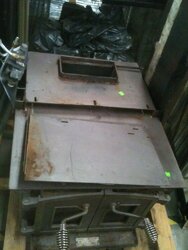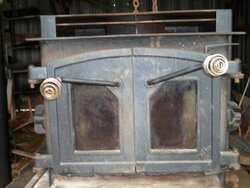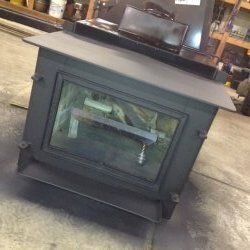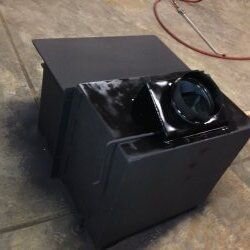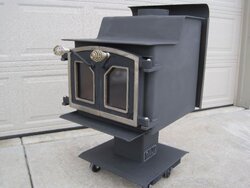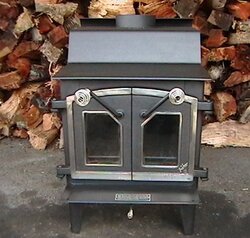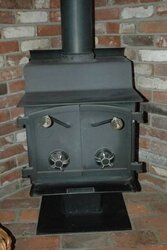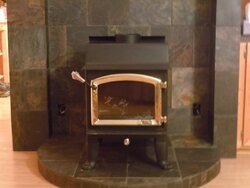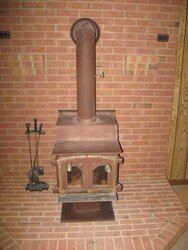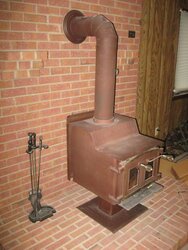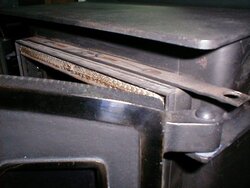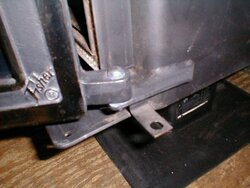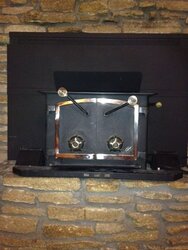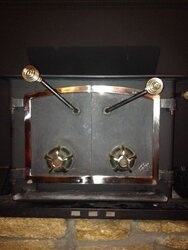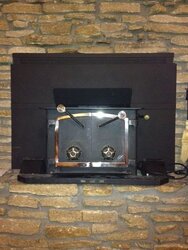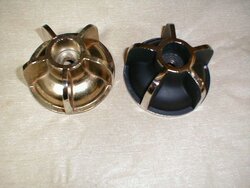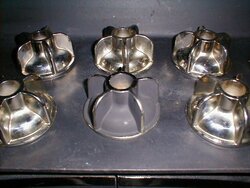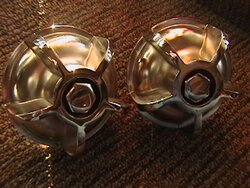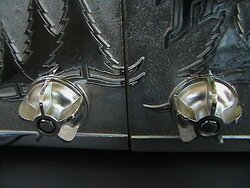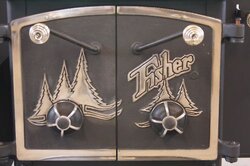Hi everyone I have been looking around on here and have found a wealth of information on how to operate a wood stove. I just purchased a Fisher Honey Bear fireplace insert a couple weeks ago. It looked to be in good shape, not rusted too bad, all the parts are there (even the screen door), and everything works. I sanded it down and repainted it, and it looks pretty darn good. However, when I fired it up, I noticed that I could see a glow back where the outlet to the chimney is welded to the stove. It's not a huge gap, probably no more than 1/16th inch. Upon further inspection, I noticed that the top of the stove was warped back under the air channel, and this is what caused the weld to break. I take it to mean that the stove was overheated at some point by a previous owner. The fan on the stove pushes air from underneath through a channel that runs accross the bottom from front to back, up the back of the fire box, and out of the top half way to the front of the stove, so it pushes the air right past the outlet. So, I'm thinking that's not good for CO. I bought some Meeco's Red Devil furnace cement and coated the joint (I had to use an extra long screwdriver to spread it), and it seems to be holding, but my question is if this stuff is strong enough to be considered a permanent fix (it says it can withstand 3000 degrees), if it needs to be welded, or do I need to start looking for a new stove? I have smoke detectors, & have ordered a CO alarm. I never had a need for one before, because I have a heat pump.
Some general information about my setup: I have installed a 6" SS chimney liner covered with 1/2" insulation & a SS cap. Since the stove has a square outlet, I fabricated a plemun with a 6" round take off which I attached to the stove with sheet metal screws. All joints are sealed with furnace cement. My chimney is in the middle of my house, and is 13 ft high. It's pretty much a straight shot up with just a very slight bend to attache to the plenum. It has an excellent draft. When I start a new fire, I can see the smoke really getting sucked up the flu. Something that I pleased to see in comparison to the old open fireplace.
My second question is how to properly use the damper to control the fire. I have done searches, but can't find any topic devoted solely to damper use.
Some general information about my setup: I have installed a 6" SS chimney liner covered with 1/2" insulation & a SS cap. Since the stove has a square outlet, I fabricated a plemun with a 6" round take off which I attached to the stove with sheet metal screws. All joints are sealed with furnace cement. My chimney is in the middle of my house, and is 13 ft high. It's pretty much a straight shot up with just a very slight bend to attache to the plenum. It has an excellent draft. When I start a new fire, I can see the smoke really getting sucked up the flu. Something that I pleased to see in comparison to the old open fireplace.
My second question is how to properly use the damper to control the fire. I have done searches, but can't find any topic devoted solely to damper use.


